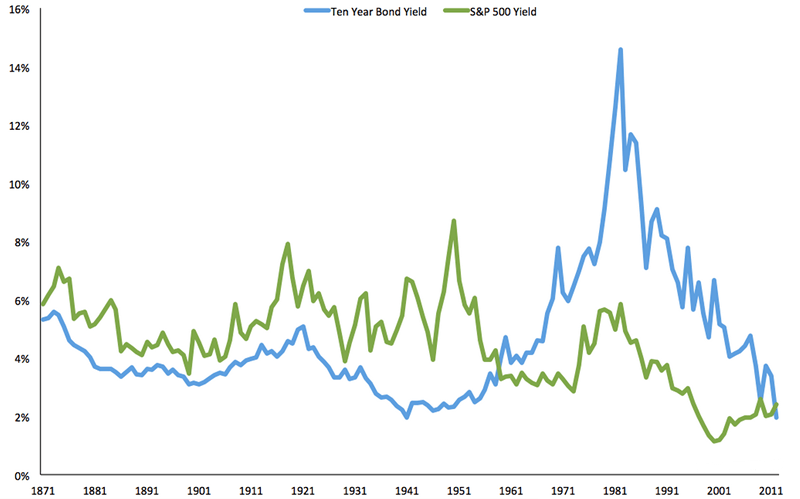by , CFA Institute
Interest in financial history (as measured by Google Trends data) has been declining fairly steadily since April 2004 and has since fallen by about 80%. If that roughly describes the amount you’ve focused on financial history over the last 10 years, it’s likely time for a quick refresher.
In the introduction to our New York Financial Market History Roundtable, our head of curriculum development Bobby Lamy noted that portfolio managers from around the world have consistently told him that an understanding of financial market history and how it affects the investment process is key to doing their jobs well.
In other words, it’s surprising that global interest in a topic that senior investment professionals around the world find valuable is dwindling. What should investors be paying attention to?
That question permeated a nearly two hour discussion in which investment luminaries Richard Sylla, Marty Fridson, CFA, Tom Scherer, and Jack Malvey, CFA considered why investment managers find so much value in the study of market history, what can be learned from it, and how investment professionals might use history to make better decisions in the Future of Finance.
So what are you missing if — like many people — you’ve been ignoring financial history? Here are three things that may awaken your interest. Clicking on any of these charts will take you to the data that produced them. Please share any observations you have in the comments field!
Stocks Yielded More Than Bonds for Almost a Hundred Years
Source: Robert Shiller.
Panelist Marty Fridson, CFA, pointed out that one of the major changes in the last century came when — in 1959 — bonds started to yield more than stocks, a trend that continued until recently.
We File As Many Patents Each Year As We Used to Each Decade

Source: United States Patent and Trademark Office.
When asked for a cause for optimism, panelist Jack Malvey, CFA, noted the accelerating pace of innovation and said that he generally believed it would increase at an exponential rate. As the chart above shows, the increase in the number of patents filed in the United States alone is astounding. Last year, Americans filed as many patents as they did in the 1940s.
Tom Scherer focused on some of the reasoning Warren Buffett used in coming up with his 16 October 2008 op-ed entitled “Buy American. I Am.”
He noted that Buffett likely would not have been quite so optimistic about the United States if it weren’t in a relatively strong competitive position.
As the readout from the Global Competitiveness Report 2014–2015 issued by the World Economic Forum (WEF) shows, this is in fact the case. According to the WEF, the United States remains one of the most competitive countries on the planet, surpassed only by Switzerland and Singapore. In the chart below, the green countries are the most competitive and the red countries are the least. Countries without a color (like Greenland) weren’t included in the study.
This is particularly important in the context of Tom’s next comment: “If he hadn’t seen that, maybe he would’ve had a different reaction.” In other words, even though the 200-plus years of growth the United States has seen might impel a natural optimism, Buffett seems to have analyzed the situation before drawing a conclusion.
This is one of the key lessons in using financial market history effectively: it is not a substitute for analysis or critical thinking, just an extra resource to draw upon.
If you enjoyed this post, consider subscribing to the Enterprising Investor.
Please note that the content of this site should not be construed as investment advice, nor do the opinions expressed necessarily reflect the views of CFA Institute.
Photo credit: National Archives
Copyright © , CFA Institute















